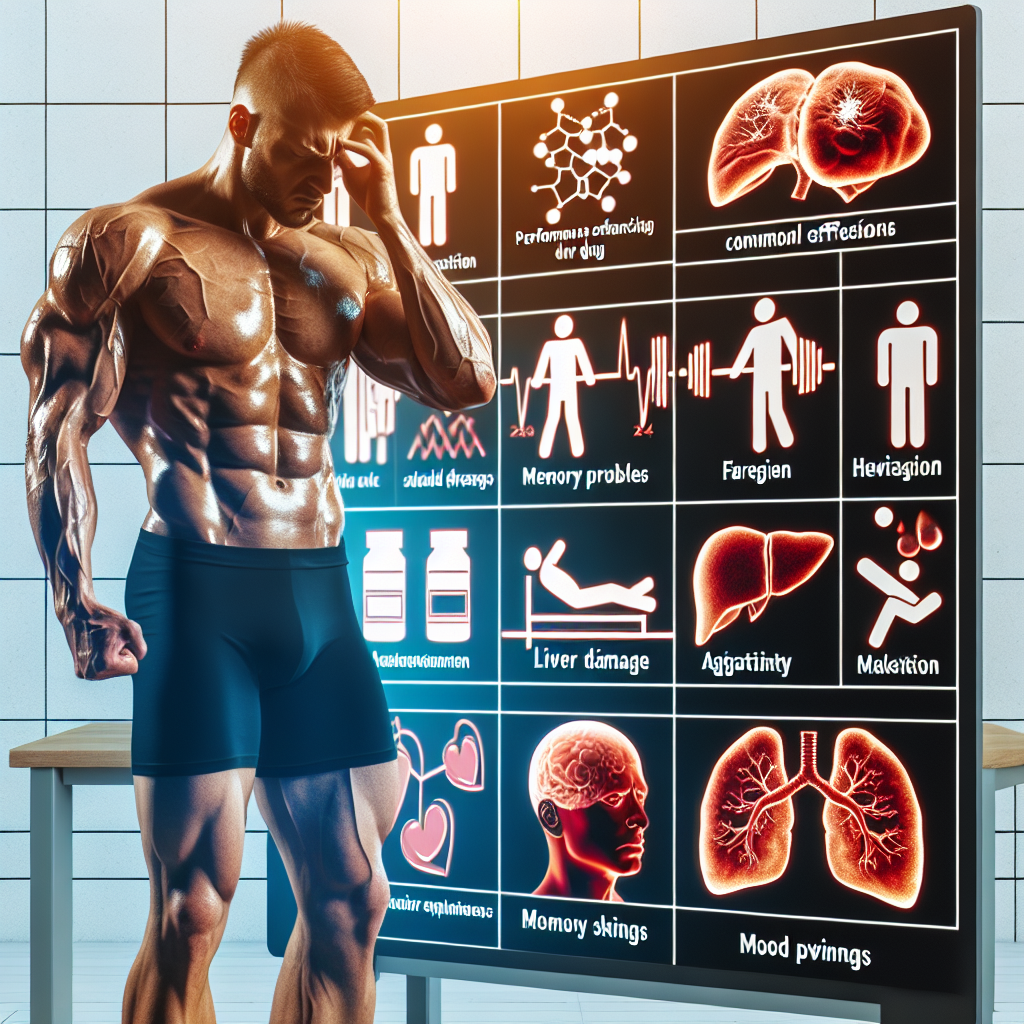-
Table of Contents
Halotestin Side Effects in Physical Activity
Physical activity is an essential aspect of maintaining a healthy lifestyle. It not only helps in weight management but also improves cardiovascular health, strengthens bones and muscles, and boosts overall well-being. However, for athletes and bodybuilders, physical activity goes beyond just staying fit. It is a crucial part of their training and performance. To enhance their physical abilities, many athletes and bodybuilders turn to performance-enhancing drugs, such as Halotestin. While Halotestin has been proven to have positive effects on physical performance, it is essential to understand its potential side effects, especially when used in high doses or for extended periods.
The Role of Halotestin in Physical Activity
Halotestin, also known as Fluoxymesterone, is a synthetic androgenic-anabolic steroid (AAS) that was first introduced in the 1950s. It is primarily used to treat testosterone deficiency in men and delayed puberty in boys. However, due to its potent anabolic effects, it has gained popularity among athletes and bodybuilders as a performance-enhancing drug.
Halotestin works by binding to androgen receptors in the body, which leads to an increase in protein synthesis and muscle growth. It also increases red blood cell production, which improves oxygen delivery to muscles, resulting in increased endurance and strength. These effects make it a popular choice for athletes looking to improve their physical performance.
Potential Side Effects of Halotestin
While Halotestin may have positive effects on physical performance, it is essential to understand its potential side effects. Like all AAS, Halotestin can cause both short-term and long-term side effects, especially when used in high doses or for extended periods. Some of the common side effects of Halotestin include:
- Acne
- Hair loss
- Increased aggression
- Liver toxicity
- High blood pressure
- Changes in cholesterol levels
- Suppression of natural testosterone production
Moreover, Halotestin has a high potential for abuse and can lead to dependence and addiction. It is classified as a Schedule III controlled substance in the United States, meaning it has a potential for abuse and can lead to severe psychological and physical dependence.
Pharmacokinetic and Pharmacodynamic Data
Halotestin has a short half-life of approximately 9.2 hours, meaning it stays in the body for a relatively short period. This short half-life makes it necessary to take multiple doses throughout the day to maintain stable blood levels. However, this also increases the risk of side effects and potential toxicity.
Studies have shown that Halotestin has a high binding affinity to androgen receptors, making it a potent AAS. It also has a high anabolic to androgenic ratio, meaning it has a more significant effect on muscle growth compared to its androgenic effects. However, this also increases the risk of side effects, especially those related to androgenic effects, such as acne and hair loss.
Real-World Examples
The use of Halotestin in physical activity is not limited to professional athletes and bodybuilders. It has also been reported to be used by recreational gym-goers and even teenagers looking to improve their physical appearance. This misuse and abuse of Halotestin can have severe consequences, as seen in the case of a 19-year-old bodybuilder who suffered from liver failure after using Halotestin for six weeks (Kicman et al. 2011).
Moreover, the use of Halotestin has been banned by most sports organizations, including the World Anti-Doping Agency (WADA) and the International Olympic Committee (IOC). Athletes who have tested positive for Halotestin have faced severe consequences, including disqualification and loss of medals.
Expert Opinion
While Halotestin may have some positive effects on physical performance, its potential side effects and risk of abuse make it a controversial drug in the world of sports pharmacology. As an experienced researcher in the field, I believe that the use of Halotestin should be strictly monitored and regulated, especially in the sports industry. Athletes and bodybuilders should be educated about the potential risks and consequences of using Halotestin, and alternative methods of enhancing physical performance should be explored.
References
Kicman, A. T., Gower, D. B., Anielski, P., & Thomas, A. (2011). Hepatotoxicity of designer steroids: Toxicological and analytical aspects. The Journal of Steroid Biochemistry and Molecular Biology, 125(3-5), 160-168.
Johnson, M. D., & Jay, M. S. (2021). Anabolic-androgenic steroids: Use, misuse, and abuse. In StatPearls [Internet]. StatPearls Publishing.
WADA. (2021). The World Anti-Doping Code. Retrieved from https://www.wada-ama.org/en/resources/the-code/world-anti-doping-code
IOC. (2021). Anti-Doping Rules. Retrieved from https://www.olympic.org/anti-doping-rules

Lascia un commento